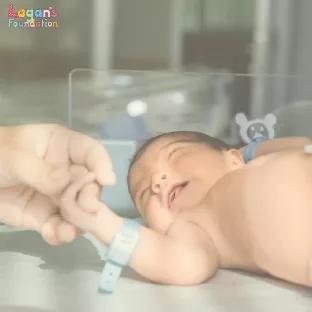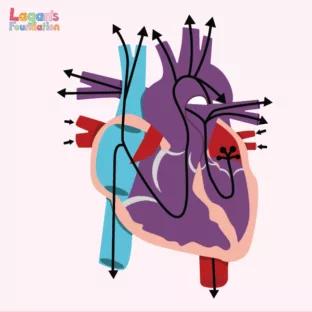All You Need to Know About Surgery for Ventricular Septal Defects (VSD)
Ventricular Septal Defect surgery is a type of heart surgery which is conducted to correct a hole between the left and right ventricles of the heart.
Ventricular Septal Defect surgery is a type of heart surgery which is conducted to correct a hole between the left and right ventricles of the heart.
The surgery involves patching up the hole in the heart, with the aim being that the child’s own cells grow over the patch, anchoring it in place even more.

How does Ventricular Septal Defect closure surgery work?
While many babies may not require surgery for Ventricular Septal Defects (VSD), some with more serious cases will need surgery to close the hole, especially if there are severe symptoms. There are also cases of VSD occuring at the same time as an Atrial Septal Defect.
A surgeon may close a small VSD if its location in the heart could cause damage to nearby structures.
Surgeries to repair VSDs include:
- Open-heart surgery – This is the preferred procedure for repairing VSDs. A surgeon will use patches or stitches to close the hole between the lower chambers. This type of surgery requires an incision into the chest plate and a heart-lung machine.
- Catheter procedure – Some VSDs can be closed using a thin, flexible tube known as a catheter. A doctor will insert a catheter into the blood vessel, usually in the groin, and guide it up to the heart. A small device is inserted through the catheter to close the hole.
After VSD surgery, your child will need regular checkups for life from a cardiologist.
What is the best age to have Ventricular Septal Defect surgery?
Usually, Ventricular Septal Defect surgery is conducted in the first 3-6 months of a baby’s life. It is recommended to be completed in the early stages to prevent any further problems or complications from forming.
Your child’s cardiologist may prescribe medicine to lessen any symptoms before the baby has surgery.
How long does VSD repair surgery take?
Ventricular Septal Defect repair surgery will usually take around several hours to complete, with the catheter procedure taking slightly less time of around 2 hours.
It’s worth remembering that preparation and recovery after surgery will add on an extra few hours. This is before the surgery, your child’s doctor may perform a variety of different diagnostic tests, including:
- Echocardiogram
- CT scan
- MRI
- X-rays
- Electrocardiogram
Are there risks involved in Ventricular Septal Defect surgery?
Most children will do well with Ventricular Septal Defect surgery, but you should be aware that there may be a possibility of some complications.
Possible risks include:
- Excess bleeding
- Infection
- Blood clots
- Abnormal heart rhythm
- Heart block
- Complications from anaesthesia
Late complications are also possible, but these are much rarer. Late complications can include problems with the heart valves or the patch used to close the hole becoming loose.
What is the success rate of Ventricular Septal Defect closure surgery?
The success rate of Ventricular Septal Defect surgery is high, with few patients needing to go in for follow-up surgery.
Data has shown there is around a 96% success rate, with death rates, valve problems and cardiac arrhythmia being a rare side effect.
What is the recovery time after Ventricular Septal Defect closure surgery?
After the surgery, your child may need to be in the recovery room for several hours while they wake up from the anaesthesia. Your child will likely be up and moving on the second day, and they will probably be able to go home a week after surgery.
What is the life expectancy for a child after Ventricular Septal Defect closure surgery?
Most people who have had Ventricular Septal Defect surgery will have the same life expectancy as someone who has never suffered from a VSD. This is also especially true if the defect has closed on its own.
What are the benefits of Ventricular Septal Defect surgery?
The main benefit of Ventricular Septal Defect surgery is to ease symptoms caused by the VSD and prevent future symptoms from occurring.
Medium to large VSDs often result in noticeable symptoms, such as fast breathing, tiring easily and failure to gain weight. These signs will typically indicate that the VSD will not close by itself. Closing the hole through VSD surgery will help to ease these symptoms and any long term damage to the heart and lungs.
Can a Ventricular Septal Defect come back after closure?
Reopening of a Ventricular Septal Defect can occur, but it is very rare. Your child’s doctor will give you guidance on managing their symptoms, and give you key indicators on what to look out for after the surgery.
We recommend that you take your child to hospital if, after the surgery, your child still experiences any of the following:
- Sweating or getting tired while feeding
- Slower than expected growth or weight gain
- Trouble breathing
- Frequent respiratory infections
Show your support by donating to our cause and help us deliver our donated care packages to children with heart defects. Please click on the button below to donate!

![Understanding Total Anomalous Pulmonary Venous Return [TAPVR]](/wp-content/uploads/2025/04/Understanding-Total-Anomalous-Pulmonary-Venous-Return-FI-312x312-c-default.jpg)


